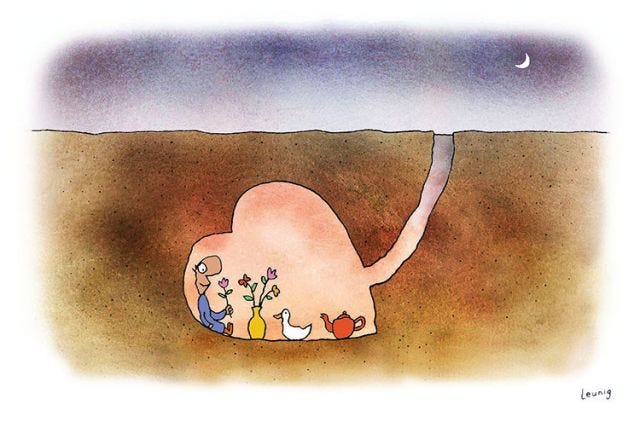EPISODE 230: GRAVEN IMAGES
POP CULTURE SPIRIT WOW
Someone here in the Jesuit community recently asked me “What exactly is this 'pop culture' you’re always talking about?”
In fact what he was actually asking was Do you have a job or are you drinking beer and eating potato chips all day as we all suspect?
But ignoring the actual question, because hey, if you’re going to come at me then come straight and come hard (also, I am excellent at playing dumb), here’s what I came up with: Pop culture is any art form that tells stories by which people understand their lives. “Story telling” here is understood broadly, and so is “pop”; in the right contexts music, basket weaving and abstract painting are all pop culture.
(For those who might think I’m being a bit hyperbolic with "basket as story", it’s a real thing. Pretty much any indigenous piece of jewelry or art is telling a story, whether you realize that or are like me and just like to wear pretty colors.)
Stained glass is a form of Catholic pop culture. So is statuary. Not that you’d know that in the States; with the exception of crucifixes and icons of Mary, most church statues here just sort of stand there, bland and lifeless except perhaps for a look of benevolence (or suffering) on their face. They are the artistic equivalent of asking someone how their day was and them responding “...Okay,” followed by a pallid silence in which each person just stares at the other while internally wondering if this is hell and then as the silence continues wondering if this is not hell than what is hell because it does not seem like anything could be worse than this.
In Rome, it’s a different story. Rather than limp handshakes statues are like lighting bolts; there is movement and personality and a sense of capturing a glimpse of something alive. Along the main thoroughfare within St. Peter’s Basilica (he says, knowing there is some official term like “nave” for the aisles of a church but also knowing it’s almost definitely not nave and the next church word that comes to mind is mitre and is that the bishop’s hat or his staff, it’s the staff, right?, or is that the crozier, and what’s the little beanie thing called, and why do they hang it in the rafters of cathedrals, if that’s a thing why not also throw your shoes like they do on city streets, wouldn’t that have more character?), various saints peer, spin, wonder, adore and lurch from the church's many wall cubbies (if I don’t know what to call the main aisle I definitely don’t have the proper word for wall insets). And each piece is imbued with such energy they stop you right there in your tracks.Each reveals a character and throws you into a story.

St. Veronica holds out the veil she used to wash Jesus' face.
(Not much story there, right? "Hey Look, I've got this cloth." But look at the movement, the drama of the sculpture. It's like she's showing us on the run and we're headed towards an incredible adventure. #VeronicaandLouise)
++
I’ve been thinking a lot about the story-telling of statuary this week, as has most of the country, as we’ve watched awful people do awful things in Charlottesville, VA, because they don’t want this statue of Robert E. Lee taken down.

The statue was commissioned exactly one century ago by Paul Goodloe McIntire, who is Charlottesville’s biggest ever benefactor outside of some guy named Jefferson. A native of Charlottesville, McIntire made his fortune as a trader on the Chicago and New York Stock Exchange, then came back to Charlottesville and over the course of forty years gave away pretty much his entire fortune to the University of Virginia -- $750,000 in named donations alone -- and the city. By 1942 he was reportedly struggling to survive, having left for himself only an annuity of $6000 to live on; he lived ten years longer.
McIntire commissioned four sculptures for the city, of Stonewall Jackson, Lewis & Clark, and American Revolutionary War officer George Rogers Clark. He also donated a park for black people named after African-American educator Booker T. Washington, and another at about the same time just for white people. One contemporary newspaper headline ran, “One for whites and one for colored”, which was the standard that had been set by the Supreme Court in 1896 in Plessy v. Ferguson. “Separate but equal.”
The Robert E. Lee statue was unveiled on May 21, 1924; the event was run by the local chapters of the Confederacy Veterans, the Sons of the Confederacy and the United Daughters of the Confederacy. One hundred Virginian Military Institute cadets paraded through the center of Charlottesville for the event, dressed in Confederate colors. The statue itself was blanketed in a Confederate flag removed by Lee’s three year old great-granddaughter.
In his dedication speech, then-UVA President Edwin Alderman had this to say:
Here it shall stand during the ages at the center of our lives, teaching, through the medium of beauty, the everlasting lesson of dignity and character, of valor and unselfish service...And now, in this hour of reunion and reconciliation, we know how...he symbolized the future for us as it has come to pass, and bade us to live in it, in liberal and lofty fashion, with hearts unspoiled by hate and eyes clear to see the deeds of a new and mightier day.
Alderman’s words tell one version of the story of this piece of pop culture – Lee as the quintessential soldier, approaching the war with courage and honor and sacrificing everything for his people, even his pride in Dixie, for the greater good. The George Washington of the South, basically.
(In his later life Lee was so intent on renewing the union that he opposed the erection of monuments where his troops had fought. “I think it wiser not to keep open the sores of war,” he wrote, “but to follow the examples of those nations who endeavoured to obliterate the marks of civil strife and to commit to oblivion the feelings it engendered.” Imagine what he’d do with the events of the last seven days...)
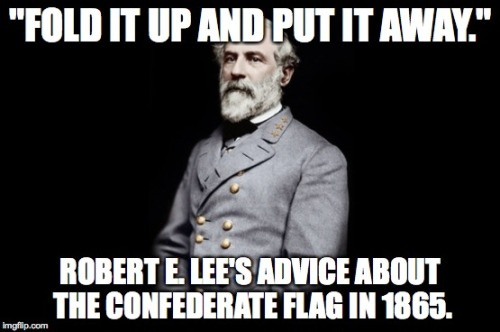
With Alderman’s words also comes quietly a story of the Confederacy as a noble if ultimately failed endeavour. Today historians talk about this ideology of the “Lost Cause”, which imagined the Civil War as ultimately a conflict about states’ rights. In this version of history black Americans and the sin of slavery are erased (just as Native Americans have pretty much been erased from U.S. history other than as nineteenth century bad guy, despite the fact that today there are 562 recognized tribes in the States and Native issues are in many cases the very same experienced by other minority groups, particularly African Americans).
But then there's the real punch in the gut version of the Lost Cause, in which instead of being ignored blacks are judged based on their post-bellum behavior (i.e poverty, desire to vote, general unwillingness to go along with what daddy white guy wants) as unworthy of the freedom they had been given.
"If only we had done things right," believers say wistfully. "We could have prevented this."
Tell me how we think about that, Judy.

++
In Alderman’s dedication, the tale he seems to think the statue tells is the "least worst" version, black people forgotten, white people overcoming their differences.
But that’s not the story a Confederate statue "tells" many if not most people today. Robert E. Lee might have been a dignified, honorable man for his times (and race). But he also represents the quest to force some human beings to remain the slaves of others.
On one level the fight over that statue (and the thousand plus other Confederate statues and other honorifics still present in thirty one states today) is a fight over which version of the story that people “read” in the statue is legitimate. “What you’re protesting is not what was intended,” some proponents argue. “And it’s not what we see when we look at it, either.”
It's actually quite a similar conflict to the one Disney has found itself in the last few months, after it announced changes to its Pirates of the Caribbean rides to eliminate the “wench auction” scene.
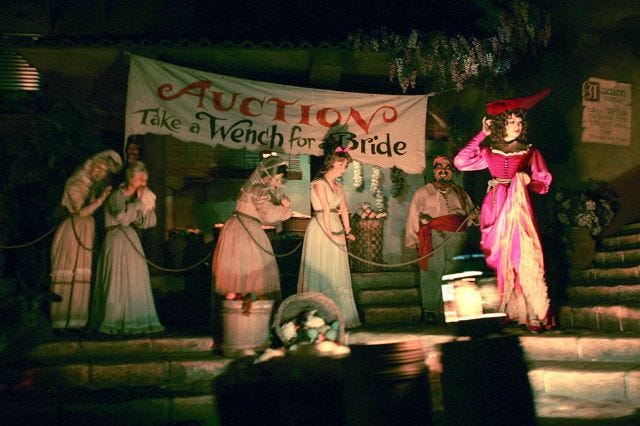
I know they're tied person-to-person like slaves but really, they don't mind.
Look, that first one has even decided to dress like a pirate.
The whole Pirates ride is actually pretty much insane if you stop to think about it; we’re in a children’s theme park and there’s a ride in which pirates show up at a town, pillage and burn it down (in great detail), then take the women, in every sense of that word (there’s actually scenes of leering men chasing ladies). How did that ever make sense?
But for those who have never seen the ride in this modern way, Disney's decision is proving disruptive. You’re taking part of my childhood and turning into something ugly, is the jist of the argument you find online. (The jist; suffice it to say the happiest place on earth has plenty of room for some very unhappy language.) The idea that this scene was always ugly and people just didn’t see it is a lot harder for them to get their heads around.
But unlike at Disney, “This isn’t what the white people of Charlottesville intended” also turns out to be a lot more debatable and disturbing than today’s supporters of the Lee statue believe. In the history of the United States, it turns out there were two main periods where Confederate statues and other memorials went up. Both were in the aftermath of civil rights decisions; the first, after the Supreme Court ruled in Plessy that equality for African Americans did not mean they couldn’t be forced to use separate facilities (like McIntire’s Washington park); the second after Brown v. Board of Education in 1954 demanded that schools be integrated and the Civil Rights movement took off.
So the statue of Lee (and of Jackson) come in the very period when Southern states are using statues, etc. to make horrible messed up no good statements about African Americans, and the results of the Civil War.
Decisions surrounding the placement of the Lee and Jackson statues are even more fraught. Both were built near or on the site of African-American communities; Slate reports that the Lee statue was erected just blocks from Charlottesville’s most-thriving black community, and the Jackson statue was put on land that had been confiscated from black residents because they supposedly posed a threat to white men passing through on the way to the nearby city opera. Even worse, the statue itself stands on the former site of the Charlottesville jail, where black people were regularly tied and whipped.
As far as I could find, there’s no evidence to suggest that McIntire himself was a racist, harbored screwed up nostalgia for the Confederacy or was trying to send this kind of message. He was born just before the war began in 1860 and spent his entire career working in the North.
But his father was also the mayor of Charlottesville when the town surrendered to Union General George R. Custer. And McIntire dedicated the statue of Lee to his parents. Was this a quiet nod to his own frustration over what his father went through, adding yet another layer to the story? Hard to say.
But the significance of the location is impossible to deny. (Also, these statues to Confederate generals are being erected in the very years that the KKK is re-surging in the South. In 1921 the group had a rally at Jefferson's tomb.) For blacks living in Charlottesville at the time these statues went up, the story they were being told was not “Robert E. Lee was a noble soldier.” It was “You lost.” It was “You’re still worthless.” It was “How do you like these civil rights?”
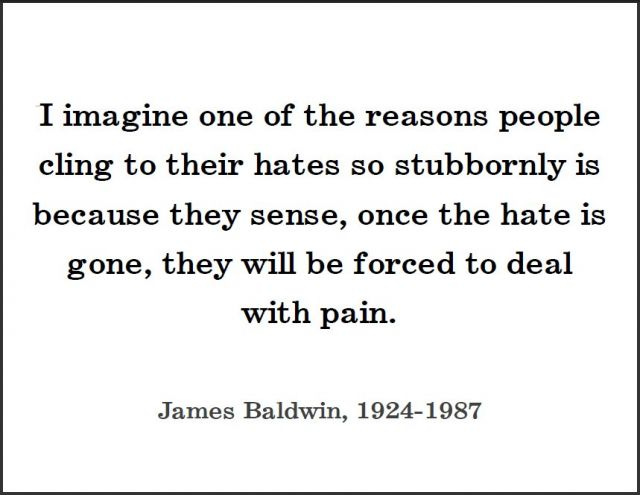
++
So this is the place in which we find ourselves, faced with the ugly still unresolved racism of our nation’s founding, and also a debate over which interpretations of a piece of pop culture are legitimate and on what grounds any interpretation should be allowed to take priority over any other.
Most of what happened over the weekend is clearly about the former, racist whack jobs who took over Charlottesville to preach hate and try and scare us. The legitimacy they seek not a moral legitimacy but the perception of being a legitimate threat.
But the debate over the Lee and Grant statues has been going on for a while now, and some of those involved are not acting from the same Nazi racist insanity. That’s my story you’re dismissing, too, they say. Robert E. Lee was an honorable man who did what he thought was his duty and also worked to bring the Union back together. Why should your interpretation of him and this statue "trump" mine?
And look, it’s true, that’s really not how reading and stories work. Sure, if you walk away from Harry Potter saying it’s about a space alien who convinces everyone that he’s a human child so that he can feed on the energy he sucks from their lives by constantly demanding their attention in the exhausting drama he keeps cooking up with his pal Voldemort – many people (the stupid ones) are going to say that’s crazy. (“Voldemort”? Really? In what world is that a human name? And if it such a human name why were humans so unwilling to say it?)
And those who call such a reading invalid are going to have a “good” (i.e. stupid) reason for saying so, namely, there’s no evidence to support that interpretation.
(Except, Did you ever see a human being who looked and acted like Voldemort? Dude didn't have a nose, people. Who does that remind you of?
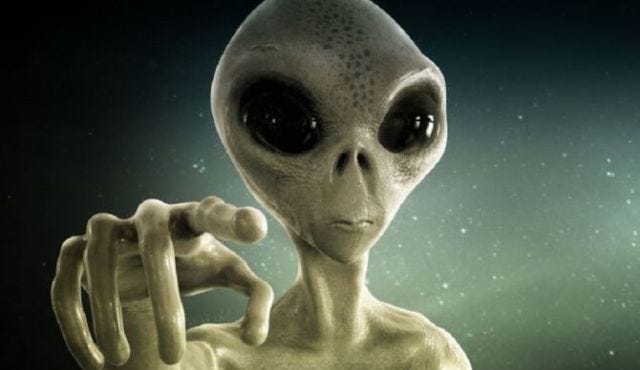


I rest my case.
But in the case of the Lee statue (et al.) we’re dealing with a story where the different interpretations are each definitely valid. And “This is the story of a good man” is the most superficial and whitewashed of layers. For those who haven’t looked deeper, who haven’t seen how Lee is not just a general but a guy who 1) if he had the war won your neighbor might be your slave and 2) is being placed here as a stand-in for “hey black people, you're nothing”, okay, that can happen, we all have blinders.
But the question is, What do you think now that you do see that other layer, that further story being told?

Put another way, sure, you saw a picture of a young woman in a fancy hat. But now that you see it’s also a sketch of a downtrodden old woman, can you still say but I want it to be the fancy hat? How does that work?
Another version: You’ve got this beautiful wedding ring. It’s precious to you, and in different ways it tells the unique and special story of your relationship. Cool.
But if you find out at some point down the road that all the pretty jewels on it are actually blood diamonds African slaves were forced to mine before they died and were thrown in pits like garbage, can you legitimately say, Yeah, but for me it’s really just the story of me and my spouse?
I mean, nice work if you can get it (I...guess?), but can you get it, though?
++
Levar Stoney, the 35-year-old African American mayor of Richmond, VA, had this to say about Confederate statues in June:
Equal parts myth and deception, they were the ‘alternative facts’ of their time — a false narrative etched in stone and bronze more than 100 years ago — not only to lionize the architects and defenders of slavery, but to perpetuate the tyranny and terror of Jim Crow and reassert a new era of white supremacy.
At the time of this comment Stoney actually said he didn’t think Richmond’s Confederate statues necessarily have to be removed. Instead, further context could be added. (“Context”: “This is Robert E. Lee. He was the General of the Army that rebelled from the Union so that it could keep making money off the backs of black slaves. But then later after his side lost he pushed Southerners to let go of their losses and build a stronger union with the North. And this statue was placed here both to honor him and to humiliate the black people who lived nearby, still struggling to achieve some measure of the equality they had been promised, as they and other minority groups continue to do today.")
But as of Wednesday Stoney has altered course, saying they may indeed need to be removed.
++
One last bit on all this: After I researched the Lee statue, I wondered about the history behind other American statue pop culture. So I googled up the Lincoln Memorial in Washington. Three crazy things I learned:
1) The initial pitch for the Memorial statue was done in 1867 by an American sculptor named Clark Mills. Mills – who had sculpted the statue for Victory that stands atop the Capitol building (and had slaves working on that project and was later thrown out of his studio in the Capitol after The New York Post and the Washington Star accused him of being a Confederate sympathizer -- you cannot make this stuff up) proposed a 12-foot statue of Lincoln signing the Emancipation Proclamation surrounded by tiers of thirty six other figures, including a set of statues of black people rising up from slavery to emancipation (which as great as that might sound were from a modern perspective incredibly problematic, insofar as all the other figures proposed were actual historical figures who were being presented as heroes who helped Lincoln get emancipation done, while the slaves were not actual people or even presented as self-directed, they were just physical symbols of the good that the white guys had done).
The proposal did not go forward as a result of financial issues, arguments about Mills’ talent, and also “political issues” – which while I couldn’t find the details of, I suspect involves not "This is an inadequate, objectifying representation of black people" but rather “A statue of Emancipation might seem like an insult to Southern whites, which we don’t need right now, and honestly since it’s just us white guys here we’re all still a little uncomfortable about the idea, too”).
It then took FORTY FIVE YEARS for another proposal to be seriously considered.

2) The location of the Memorial on the Potomac River was itself a conscious attempt to create a bridge between North and South, the Potomac having served as a dividing line between Union and Confederates.
3) It was only after African American singer Marian Anderson did an Easter concert at the Lincoln Memorial in 1939 (having been refused the chance to perform at Constitution Hall by the Daughters of the American Revolution because she was black), and Martin Luther King gave his “I Have a Dream” speech in 1963 that people began to associate the Lincoln Memorial with Emancipation. “In no way did the creators of the memorial intend this meaning,” writes C. Todd Stephenson in the book Franklin D. Roosevelt and Abraham Lincoln: Competing Perspectives on Two Great Presidencies. They did everything in their power to play down the image of Lincoln as emancipator, instead celebrating the role of Lincoln as preserver of the Union and healer of sectarian division.”
(Shortly before the inauguration of Barack Obama in 2008, NPR reported that there was still no representation of the emancipation of American slaves hanging in the Capitol. For a time there had been one of Lincoln presenting the Proclamation to his cabinet, but it had been replaced in the 1950s with a portrait of Northern and Southern soldiers shaking hands.There was not a single black person in the painting.)
++
If you're interested in what the Catholic Church has had to say about Charlottesville, here's a quote from Cardinal Daniel N. DiNardo, president of the U.S. Catholic Conference of Bishops:
The abhorrent acts of hatred on display in Charlottesville are an attack on the unity of our nation and therefore summon us all to fervent prayer and peaceful action. The bishops stand with all who are oppressed by evil ideology and entrust all who suffer to the prayers of St. Peter Claver as we approach his feast day. We also stand ready to work with all people of goodwill for an end to racial violence and for the building of peace in our communities.
Meanwhile in nearby Richmond, Bishop Francis X. DiLorenzo said on Saturday,
In the last 24 hours, hatred and violence have been on display in the City of Charlottesville. I earnestly pray for peace. I invoke the prayer of St. Francis who prayed “Lord make me an instrument of thy peace. Where there is hatred, let me sow love; where there is injury, pardon.” I pray that those men and women on both sides can talk and seek solutions to their differences respectfully. The love of Jesus Christ is the most powerful weapon against hatred. Only the light of Christ can quench the torches of hatred and violence. Let us pray for peace.
Two days later he seemed to have realized "both sides" was a big mistake:
I remain deeply saddened about the devastating events in Charlottesville over the weekend, most especially I mourn the loss of lives and the injuries of many more. Hatred, and its manifestations of racism, neo-Nazism and white supremacy, are sins against God and profoundly wound the children of God. I am grateful for the many people, including clergy and people of faith, who bravely stood against hate, whether in prayer or in person. I also thank and pray for the men and women from law enforcement and emergency services who protect us. I continue to join my brother priests and bishops, the lay faithful and people of all faiths as we turn to God in prayer. We ask his mercy, pardon and wisdom as we root out these long-standing evils, strands of which, tragically, remain woven within the fabric of our society.
In the coming days, our Diocese is exploring how we can address the issues highlighted in Charlottesville through prayer and action. As we prepare to celebrate the Solemnity of the Assumption of the Blessed Virgin Mary, we ask our Blessed Mother to intervene on our behalf. O Mary, Queen of Peace-pray for us.
Looking at the diocese's Facebook page where these statements were posted, though, the posts that have followed have talked almost exclusively about unity and reconciliation. The most recent post offers this statement: "Jesus teaches that we must forgive our brother from our heart. God give us the grace we need to be truly forgiving".
With it is this photo:
Reconciliation is the fundamental of Christian life. But this photo, man. It once again erases the people this conflict was about, and says really Charlottesville was about white people disagreeing.
(I mention this only so it's clear, it's not like we Catholics are responding perfectly either. Michael O'Louglin at America has done a great piece on how U.S. bishops' response evolved over the days following Charlottesville.)
I also wrote this little piece trying to suggest a spiritual way of living in this time of “Hey, it’s been three hours, time for the next existential-level crisis.” I was a little nervous it would come off too predictable – hey look, instead of doing anything the priest says we should pray – but really, I think we’re being so inundated with information and anxiety right now, it’s close to impossible to sort through it all and judge anything for ourselves. So the piece is me trying to suggest we each need a secret garden to go back to, and to offer a way we try to cultivate ours in the Jesuits. Or something.
++
Saw the first episode of “The OA” this week. I can’t say I know what it’s about quite yet – there’s a young woman, she disappeared seven years ago, then got rediscovered in the present, says her name is now “The OA” instead of “Prairie”. Oh, and she was blind but now she can see.
I think it’s going to be some kind of scifi -- The OA is a definite alien name -- but what's really grabbed me are the credits. They happen at a very unusual moment in the story. Which is not really that big a deal, they are actually just normal credits once they happen. But I don’t know, at a time when it seems like everything’s been done, it was exciting to see there’s still fresh ideas not just in terms of story and content but form.
Marvel’s The Defenders also drops tonight (and it's only eight episodes and Domino delivers late so binging is totally legitimate). Defenders is the Netflix show that brings together the characters from its four other superhero TV shows. (Think The Avengers on a small screen with more interesting and complex characters, including the fantastic Iron Fist.)

Iron Fist is great, I’m excited to see more of him, do not @ me.
In honor of the show dropping I had intended to publish a related interview today, but given Charlottesville I decided to push it back until next week. I’m really looking forward to you getting to read it; it’s an interview with an Australian Jesuit lawyer friend of mine who is legally blind. It’s a conversation about pop culture representations of disability and what it’s like when everyone you meet wonders what you think of Daredevil and also think they’re the first person to have ever said that to you. “He’s a blind lawyer, you’re a blind lawyer, it’s cool, get it? Do you have powers too, ha ha ha?”
“Yes, the power to walk away from your atrophied wit."
Stay tuned.
++ LINKS ++
So I don’t know what the deal is, but celebrity profiles keep popping up in my newsfeeds/drone spytech, which is definitely not watching you right now and wondering about that thing you’re doing while you read this. (All I can say is, No judgments. Just recommend this newsletter to other people and we're all good.)
I've seen so many of these profiles lately I think I’m going to try and get a couple of the writers to answer a few questions, do a whole piece on the making of celebrity profiles. But in the meantime, I not only urge but demand that you check out this new GQ profile of Robert Pattinson. His ideas about how to do their interview are bonkers level insane, the writer’s reactions are funny and insightful, and yet still by the end you have a certain empathy for Pattinson, too.
A brilliant, brilliant piece of writing that made me laugh out loud over a dozen times. And I never laugh at anything, except my nephew and nieces’ tears.
Here’s a fascinating piece on the disturbing cultural assertions implicit in politics’ and TV news’ use of blondes today. Blondes, tell me what you think. Some pretty challenging ideas presented.
And here’s a piece on why Martin Crane’s chair on Frasier was the real star of the show. Because pop culture can also be fun.
It’s nuts out there. But don't give up. We’ve made it this far.
